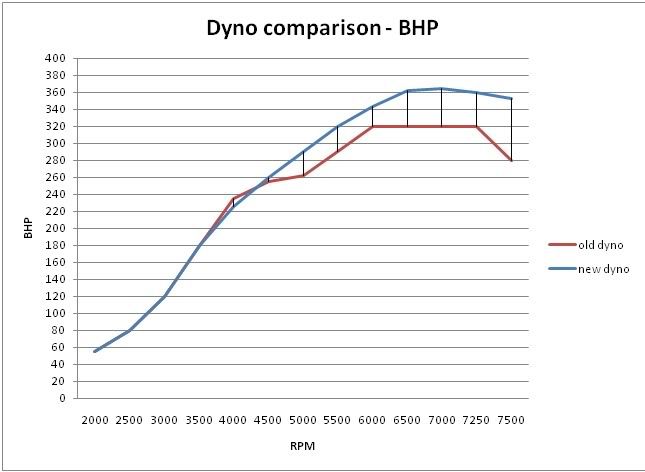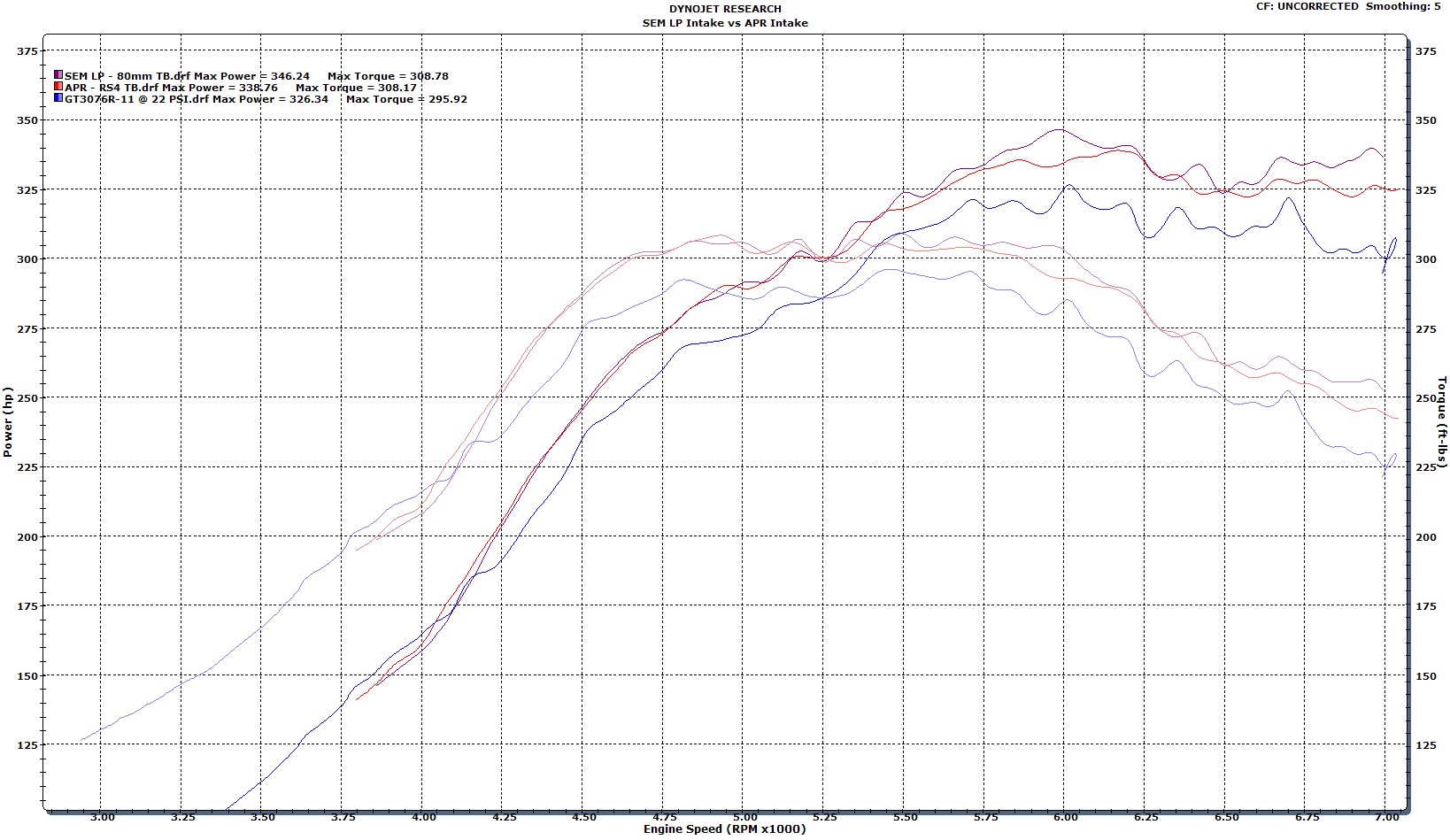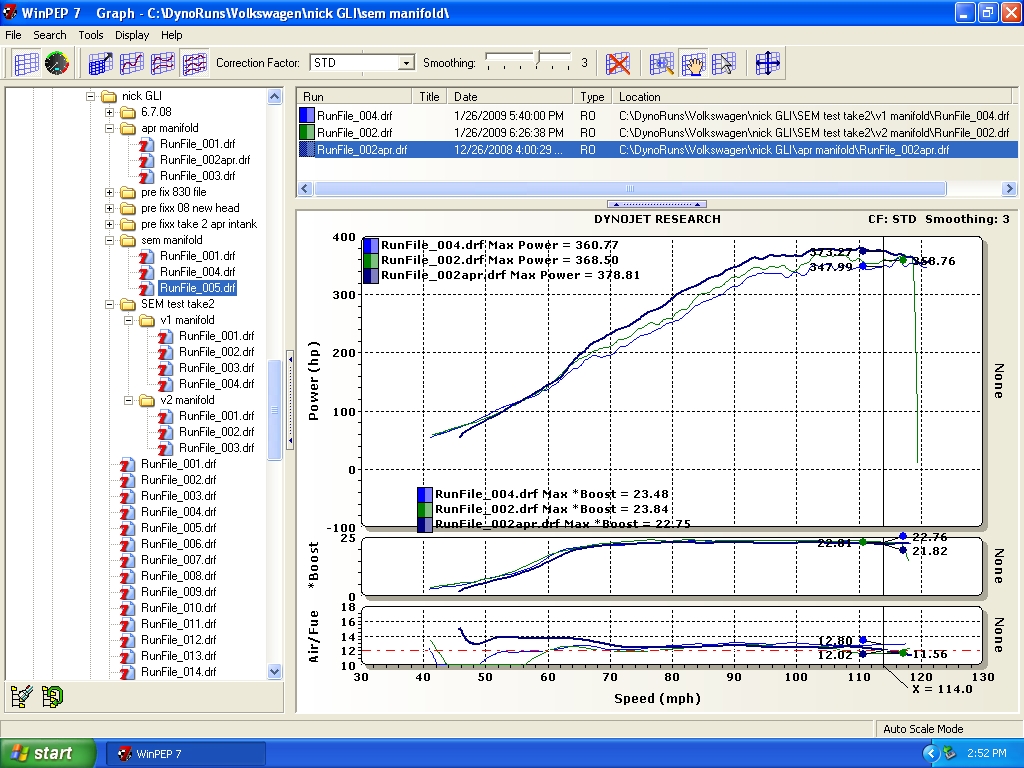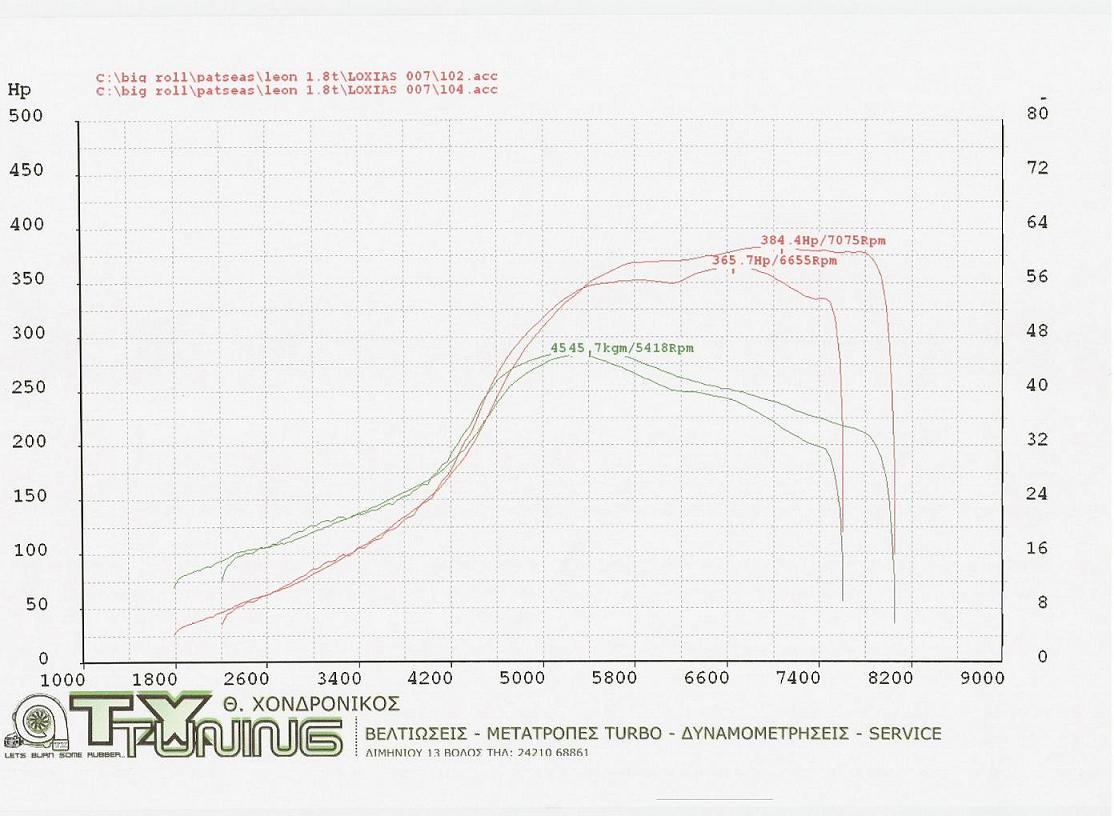A conservative drivetrain calculation back to bhp would put that at 400bhp.
Keith
I believe you have a hub dyno. Do you really believe that a gearbox, drive shafts and tyres loose 37hp as heat and noise? Thats a sh!t load of heat, and even more unbelievable amount of noise. How does the gearbox oil survive at the temperatures needed to dissipate that heat through the gearbox casing.
There are some inertial losses on hub dynos, ie the power taken to accelerate the drive train which is not measured verses the power taken to accelerate the load (which is measured). But if you hold the engine at fixed speed against the brake at points across the power curve, these go away and you're only left with heat and noise as losses.
Gearbox efficiencies increase significantly with load and high ratios, so in top gear with high load, I doubt an automotive gearbox will loose more than a few% of power.
Intakes.
All these intakes will only make noticeably more power if the turbo has some flow capacity left at the intake pressure you are currently running.
Map sensor is pre intake manifold, so decreasing the pressure drop between map sensor and head will lead to higher flow if the pressure at the map can be maintained.
If this pressure can't be maintained, as the turbo is maxed out on flow, then the only power gains are by more even cylinder filling, and the tiny gain that this will give you in timing advance.
On a small port head, if you limit your intake pressure (at map) to 1.6 bar, a gt28rs has some flow capacity left. Do the same on a large port, and it hasn't. In fact it won't hold 1.5 bar past about 6500. A better flowing manifold may give you a few hp on a large port limited to 1.6bar map, but the turbos maxed out flow wise already, so not much.
Run a 2871 at 1.7bar max, and the same is true. So in conclusion, you can get the same flow gains by upping pressure, and will only loose out a little due to less even cylinder filling and slightly lower charge density.
The apr sem manifold dyno you post is interesting, as get 10whp different on a dynojet by running 5th instead of 4th (02m transmission) ad the dynojet just won't give enough load to spool my turbo in 4th, so I'm pretty sure I could do the same test in reverse and give proof that the SEM manifold destroys the APR one.
I don't believe that either destroys the other, as they are both well designed and should both be nice additions to any high power 1.8T. I bought an RMR which gave me some timing advance gains and had a measurable drop in map pressure at max turbo flow. I'd say buy the one which looks the prettiest, as it's the main difference you'll find between these manifolds. Personally I like the short runner rmr as it should be good for the 5000-8200rpm power band the 3076 will give.
Anyway. Back to the original topic. Cracked jabba manis. Yes they do crack. Mines got over 40k on it, and is cracked to hell, but the cracks close up as soon as it warms up. Had 7 different turbos on it in that time. The mani survives, the turbos don't. Don't worry about it unless they blow a lot when hot.
Last edited:







